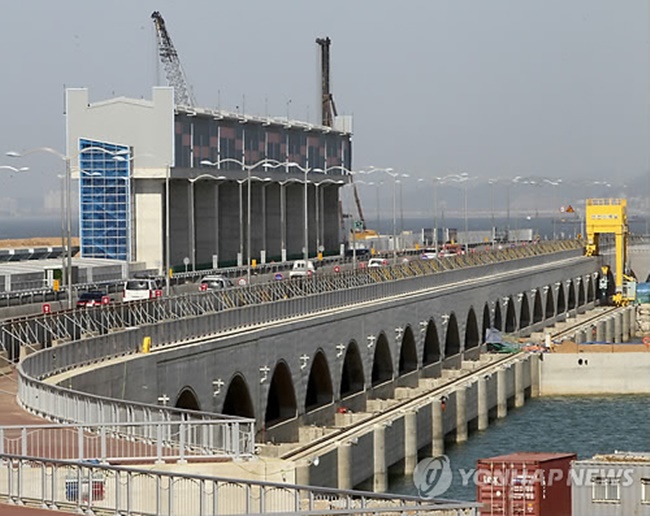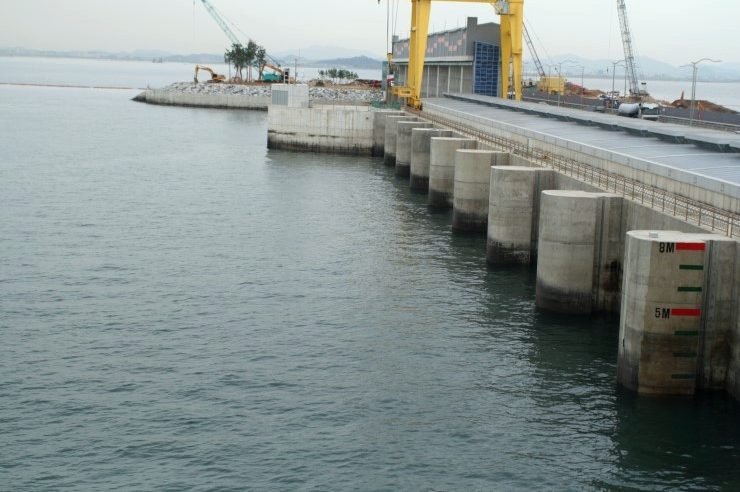
Sihwa Lake Tidal Power Station, the largest tidal power installation in the world since 2011 when it opened, is also located in Ansan with a total power output capacity of 254 MW. (Image: Yonhap)
ANSAN, SOUTH KOREA, June 2 (Korea Bizwire) – As the newly elected Moon administration accelerates its efforts to implement environment policy, with the latest example being a temporary shutdown of aging coal-fueled power plants around the country, the city of Ansan is drawing attention over its emergence as a pioneer of renewable energy.
According to 2015 data released Wednesday by the Ansan city government, the city has the highest renewable energy production rate at 9.38 percent among all cities in Gyeonggi Province, far surpassing the average rate of 4.1 percent in the region.
Renewable energy production rates refer to the amount of clean energy produced compared to electric power generated by other types of sources including petroleum, coal, nuclear energy and natural gas.
Last year alone, a total of around 1.45 million tonnes of oil equivalent (toe) was produced in the region of Ansan, of which 135,000 toe was provided by renewable energy sources.
Ansan was able to report a high reliance on renewable energy as the city boasts a number of larger-scale renewable energy facilities, including wind and solar power plants, while also using fuel cells and geothermal resources to expand the production of energy.
Sihwa Lake Tidal Power Station, the largest tidal power installation in the world since 2011 when it opened, is also located in Ansan with a total power output capacity of 254 MW.
Through ten water turbine generators, the tidal power station produces a yearly average of 55,200 mwH.
Ansan’s environmental efforts at a local level have also contributed to its reputation as a leading city in renewable energy, as the city government managed to install solar panels on the rooftops of nearly 1,200 households, which altogether have a total of 2,900 kW in electricity generating capacity.
The northwestern South Korean city has also experienced an improvement in air quality since it began increasing the use of clean energy.

Ansan was able to report a high reliance on renewable energy as the city boasts a number of larger-scale renewable energy facilities, including wind and solar power plants, while also using fuel cells and geothermal resources to expand the production of energy. (Image: Wikimedia Commons)
Sihwa Lake Tidal Power Station alone is thought to reduce approximately 315,000 tons of Co2 emissions every year, while local wind power plants together had the same impact on air quality as planting 1.85 million trees.
“By 2030, we plan to produce 30 percent of electric power from renewable energy sources, with the ultimate goal having the same impact as the shutdown of one nuclear power plant,” Ansan Mayor Jae Jong-gil said.
M.H.Lee (mhlee@koreabizwire.com)






